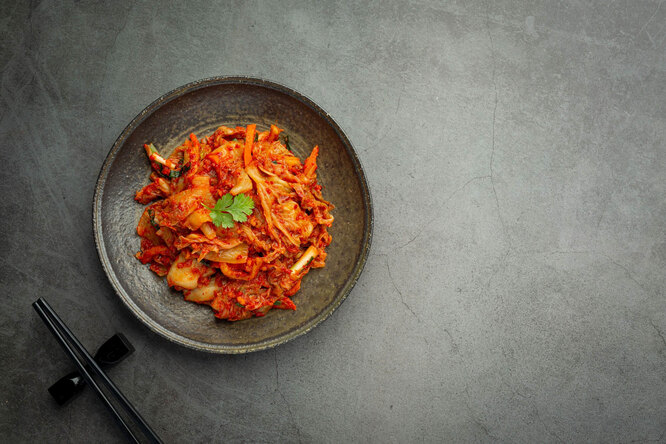Sergey Leonov, chef, founder of the online academy of healthy eating “ZOZhigay”, author of master classes on anti-age cuisine, and Andrey Zhukov, founder of Pro Trener personal training studios, shared their thoughts on this topic with MT.
Did you know that with irritable bowel syndrome, your 4 eggs for breakfast, chicken breast for lunch and white fish for dinner simply go down the drain, to put it mildly. Where it flies, you understand. Therefore, before loading yourself with meat, check the digestibility of protein by your individual body.
An endocrinologist will help solve problems with the gastrointestinal tract, giving up alcohol and including fermented foods in the diet.
And this is not banal sauerkraut, but also other vegetables, super tasty Korean spicy Kim chi, kambucha or fermented kvass, which you can easily create in your kitchen.

My second piece of advice for those who want to improve their fitness is to look at their diet under the lens of “adding fats and sugars.”
Factory-made sauces contain a lot of sugar, food in a restaurant or from the finished products shelf in a supermarket contains a lot of fat. And this is not healthy fat from avocado, olive oil, ghee and red fatty varieties. This is the “burnt fat” of cutlets, which leads to an increase in chronic diseases and not muscles. Well, my favorite thing is that chicken cutlets from cooking contain pure protein, at most 30 percent of the total weight of the product. The rest is chicken skin, bread, starch and spreads of various origins.
It is not surprising that with such a pseudo healthy lifestyle it is not the triceps that grow, but the belly. My skin is also not in good shape, and my hair is falling out. So the formula “you are what you eat” works in this case too.
Number of calories
There must be a surplus, i.e. when we want to lose weight, there is a deficit, and when we want to gain, no matter what fat or muscle mass, there must be a calorie surplus. We should consume more calories, but if we don’t exercise, we gain fat. If we train, then most likely it will be muscles.
There should not be so many calories, this is a surplus of about 300–500 kcal more, and that’s taking into account the fact that you need to know your basal metabolism. To this we add physical activity — how much you spend through sports and add another 300–500 calories. This will be the first condition for the growth of muscle mass.
If we don’t eat enough calories, it doesn’t matter whether it’s protein, fat, or carbohydrates, then in any case the muscles will become stronger, but there will be no increase in the volume of muscle mass. If we want to maintain lean muscle mass, then here we can stay within our calories and then the muscles will be leaner, but at the same time they can also be stronger, although they will not increase and will not grow.

Amount of protein
Protein is the building material for our muscles. If you play sports, then protein should be 1.5 grams. per 1 kg of weight. Sometimes men can be increased to 2 grams so that it works on muscle mass and muscle growth occurs.
In normal life, protein can be 1–1.2 per 1 kg of weight. The protein should be easily digestible and not fatty, because fatty protein (for example, fatty meat, pork). There is a risk that you will gain more fat from calories rather than muscle. Therefore, do not overdo it with fatty protein.
Lean protein is chicken, turkey, lean meat, rabbit, fish. In this case, fish can be fatty because it contains Omega that is beneficial for us. Dairy products, cottage cheese should be no more than 4%, this is considered normal — in order to provide fuel to the muscles. Eggs, seafood, all these are protein foods. In order to add protein to your food, you can eat only the white part of an egg, for example.
Carbohydrates should also be present in the diet. Protein food should be 30% of the total food. Carbohydrates should be 40% and these are, as a rule, complex carbohydrates: rice, buckwheat, pelta pasta, i.e. those carbohydrates that provide long-term energy and promote the absorption of protein foods.
It is not recommended to eat more than 30 grams at one time. protein, because protein is not absorbed particularly quickly. It is better to distribute protein foods throughout the day and with each meal: breakfast, lunch, dinner and snacks. It is important to always have protein foods from the above products.
If this is an afternoon snack, for example, then include at least low-fat yogurt with added sugar. It is also suitable for slightly nourishing our muscles.
Fat should remain the same 20–25%, i.e. we maintain these proportions of the total volume of food so that our muscles receive adequate nutrition.


